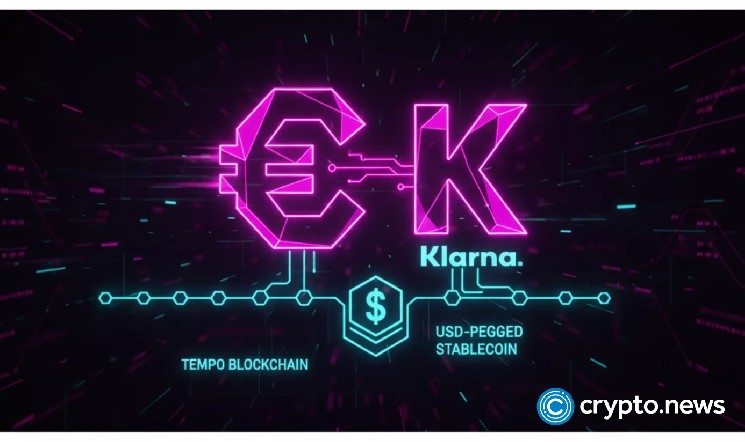Klarna Disrupts Global Payments with Launch of USD-Pegged Stablecoin
Swedish Fintech Giant’s Bold Move Signals Mainstream Crypto Adoption
In a significant development at the intersection of traditional finance and blockchain technology, Swedish fintech powerhouse Klarna has unveiled its entry into the cryptocurrency space with the launch of KlarnaUSD, a USD-pegged stablecoin. This strategic initiative represents not merely an experimental foray but a calculated maneuver to revolutionize cross-border payments and potentially transform the global financial landscape. The move positions Klarna, valued at over $6.7 billion following its recent NYSE debut, at the forefront of financial innovation as traditional institutions increasingly embrace digital assets.
Built on Tempo, the layer-1 blockchain jointly developed by Stripe and Paradigm, KlarnaUSD is currently operational on Tempo’s testnet, with comprehensive mainnet implementation scheduled for 2026. Klarna becomes the pioneering financial institution to issue a token via Bridge, Stripe’s specialized stablecoin infrastructure. This collaboration underscores the growing synergy between established payment processors and blockchain technology, signaling a potential watershed moment for mainstream crypto adoption. Sebastian Siemiatkowski, Klarna’s visionary CEO, characterized the launch as the beginning of a comprehensive strategy, emphasizing that cryptocurrency has evolved to become “fast, low-cost, secure, and built for scale.”
Transforming International Payments Through Blockchain Technology
The initial deployment of KlarnaUSD will focus on internal operations, specifically targeting the inefficiencies plaguing cross-border payments. The global financial system currently incurs approximately $120 billion annually in international transaction costs—a financial burden Klarna aims to drastically reduce through blockchain implementation. Financial analysts estimate that blockchain payment rails could deliver cost reductions of up to 90% compared to conventional networks, representing billions in potential savings across the industry.
“The current international payment infrastructure was designed for a pre-digital era,” explains Nikhil Chandhok from Circle, highlighting the transformative potential of stablecoins. “Blockchain technology eliminates numerous intermediaries and settlement delays inherent in traditional systems.” With Stripe already processing a substantial portion of Klarna’s payment traffic, the integration of Tempo’s infrastructure for settlements creates a seamless ecosystem that could potentially redefine global financial transactions. Once internal testing concludes, Klarna plans to extend KlarnaUSD functionality to its vast network of merchants and consumers, creating a comprehensive payment solution that bridges traditional finance with digital assets.
Klarna’s Strategic Positioning in the $304 Billion Stablecoin Market
The stablecoin market has experienced exponential growth, reaching a remarkable $304 billion in capitalization and facilitating approximately $27 trillion in annual transaction volume. This expansion reflects increasing institutional confidence in digital assets, particularly as regulatory frameworks begin to solidify. The passage of the GENIUS Act in the United States has established clearer guidelines for stablecoin issuers, catalyzing institutional participation in the sector.
Klarna’s entry into this burgeoning market is particularly noteworthy given its substantial global footprint—serving over 114 million customers and processing $112 billion in annual gross merchandise volume. This extensive reach provides Klarna with unparalleled opportunities to scale its stablecoin operations and potentially achieve network effects that have eluded many crypto-native projects. The company joins an illustrious cohort of traditional financial institutions exploring stablecoin technology, including MetaMask, Western Union, and Visa, all of which are investigating how digital dollars can modernize payment systems and enhance financial inclusion. Industry experts suggest that Klarna’s established user base gives it a significant advantage in driving mainstream stablecoin adoption, potentially accelerating the transition toward blockchain-based financial services.
Post-IPO Expansion and Strategic Blockchain Integration
Klarna’s stablecoin initiative emerges as a central component of its post-IPO expansion strategy in the United States market, following its successful $1.37 billion listing on the New York Stock Exchange. The timing reflects a calculated approach to capitalize on growing institutional interest in digital assets while leveraging Klarna’s strengthened market position. Siemiatkowski has been increasingly vocal on social media platforms about integrating cryptocurrency technologies into Klarna’s ecosystem, actively soliciting community feedback—a strategic approach that suggests comprehensive blockchain integration rather than superficial implementation.
The development of KlarnaUSD represents more than technological experimentation; it embodies Klarna’s vision for the future of financial services. By addressing the fundamental inefficiencies in cross-border transactions, Klarna positions itself not merely as a buy-now-pay-later service but as a comprehensive financial infrastructure provider. Financial technology analysts note that successful implementation could significantly enhance Klarna’s competitive advantage against both traditional financial institutions and fintech rivals, potentially establishing new industry standards for payment processing efficiency and cost-effectiveness.
Implications for the Future of Global Finance and Consumer Payments
While KlarnaUSD may not immediately replace conventional payment methods for everyday consumer transactions, its development signals a profound shift in how global financial systems may operate in the near future. The infrastructure being built today lays the groundwork for a more interconnected, efficient global payment network that could eventually transform how consumers and businesses interact financially across borders.
“We’re witnessing the early stages of a fundamental restructuring of payment rails,” notes Dr. Eleanor Prescott, Professor of Financial Technology at Cambridge University. “Stablecoins like KlarnaUSD represent the logical evolution of money in a digital economy—maintaining the stability of traditional currencies while leveraging the efficiency of blockchain technology.” For consumers, the long-term implications could include dramatically reduced costs for remittances, near-instantaneous international transfers, and seamless currency conversion—benefits that particularly impact underbanked populations and cross-border commerce. As Klarna continues to develop its blockchain capabilities and expand KlarnaUSD functionality, the line between traditional finance and cryptocurrency may increasingly blur, potentially accelerating the adoption of digital assets across the broader financial ecosystem and forever changing how money moves around the world.


